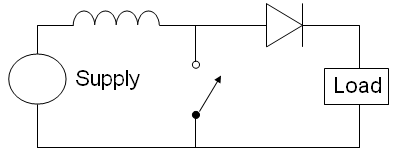Yeah, 3 amps is a lot of current for a Zener. I don't know of any Zener diodes that can handle it. You'd have to use it in an emitter follower circuit, like so:

That's not really a solution to your problem, though.
Well, take a look at the canonical boost converter schematic:

Admitting ideal components, the output voltage is 1/(1-D) times the input voltage, D being the duty cycle. As D approaches zero, Vout approaches Vin. You can see that in the schematic - when the switch stays open all the time, the input is bypassed through the diode. Ignoring its voltage drop, the output equals the input.
Now, I don't know how an off-the-shelf solution would react to being fed a voltage higher than the output, it could have protections against such a situation, but if you were to build it, it should work. What exactly have you found?
A buck-boost converter would be a more elegant solution, as it can step the voltage up or down, but since the maximum output from the generator is 7V, I don't believe it's absolutely necessary to use that topology.
Ah, by the way: magnetos output AC. Is this 4~7V output you're measuring already rectified and filtered to DC, or is it AC?